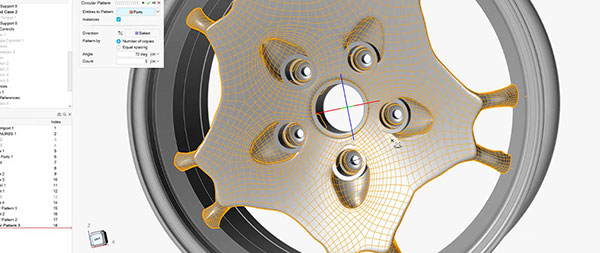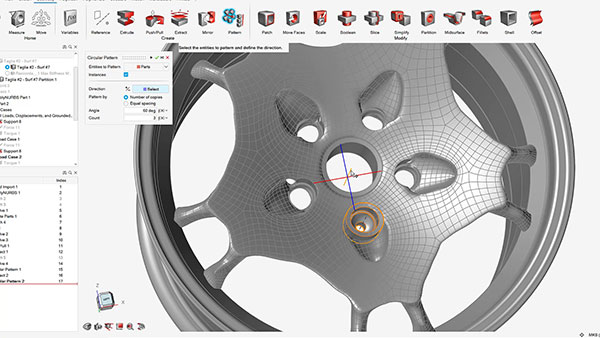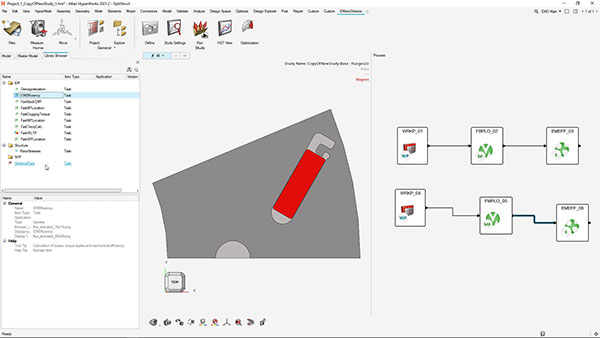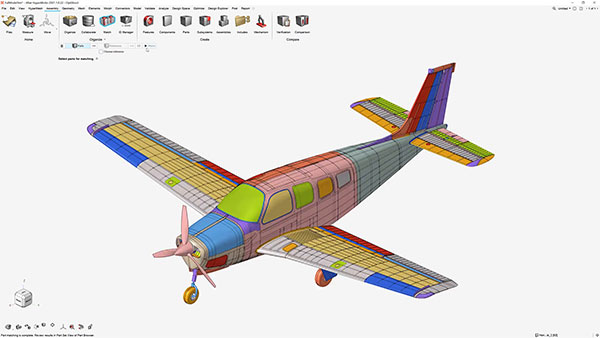Editor’s Pick: Increased Flexibility for Simulation-Driven Design
Enhancements and new features focus on increased flexibility for various simulation-driven design workflows.

Altair Simulation Suite 2021.2 focuses on increased flexibility for a wider range of simulation-driven design workflows. Image courtesy of Altair.
Latest News
October 20, 2021
Altair announces the immediate availability of Altair Simulation Suite 2021.2, a comprehensive update of the popular simulation suite. Enhancements and new features focus on increased flexibility for a wider variety of simulation-driven design workflows.
The updates and new features fall into three broad categories:
- Enhancing simulation-driven design
- The right model, for the right decision, at the right time
- Bringing augmented intelligence to a broad range of CAE tools

Under Enhancing Simulation-Driven Design, Altair Inspire brings parametric feature-based modeling and simulation workflows to all designers, even if they do not have access to traditional CAD tools.
Improvements to Altair’s high-end solvers allow for more flexible what-if studies. The use of these advanced solvers has been extended into studying flexible bodies for motion analysis. Altair also says these improvements allow faster integration with Altair SimSolid for rapid analysis of large assemblies.
There is a new Python-based API with more than 500 documented, running examples. The company says this enables fast automation and customization of simulation-driven design and manufacturability workflows.

In the category of The Right Model, users can now build mixed fidelity models with appropriate complexity to speed the decision-making process. Increased flexibility in setting up simulation scenarios comes from a new product in the Simulation Suite, Altair Pulse. The company says Pulse “orchestrates meaningful models from the broad workflows required to simulate complex systems-of-systems to the focused workflows needed to enable fast, reliable and repeatable modeling, analysis and optimization.”
Altair Pulse includes:
- A digital thread workflow that drives script consolidation, process commonization and data traceability for simulation key performance indicators (KPIs) across the enterprise and throughout the product lifecycle.
- Digitization of best practices to increase team efficiency and analysis consistency, while reducing procedural errors and non-value-added time. Altair says this leads to increased use of simulation to inform performance targets, evaluate attribute trade-offs and explore what-if scenarios.
- Support for multiple scripting languages to eliminate repetitive tasks across applications, even for complex processes.
For Bringing Augmented Intelligence to CAE Tools, Altair says the use of various artificial intelligence approaches—which they call augmented intelligence as a shorthand term—improve collaboration by faster design convergence. New features include a new utility in Altair HyperWorks called shapeAI, which applies machine learning to find and classify parts by shape inside geometry files or finite element meshes. Another feature called signalAI can interpret field data to prevent product failures. Altair says this is helpful in situations where data shows product health deterioration, by predicting the effects of environmental changes in real time.

“Leveraging new capabilities enriched by AI, we are liberating users from tedious and repetitive tasks, and enabling them to run more what-ifs and design iterations,” says James R. Scapa, founder and chief executive officer, Altair. “By supporting better decision making at the earliest possible opportunity, Altair is once again accelerating and optimizing design and manufacturing outcomes.”

A video introducing Altair Simulation Suite 2021.2 is here:
Sources: Press materials received from the company and additional information gleaned from the company’s website.
More Altair Coverage
Subscribe to our FREE magazine, FREE email newsletters or both!
Latest News
About the Author
DE’s editors contribute news and new product announcements to Digital Engineering.
Press releases may be sent to them via [email protected].






